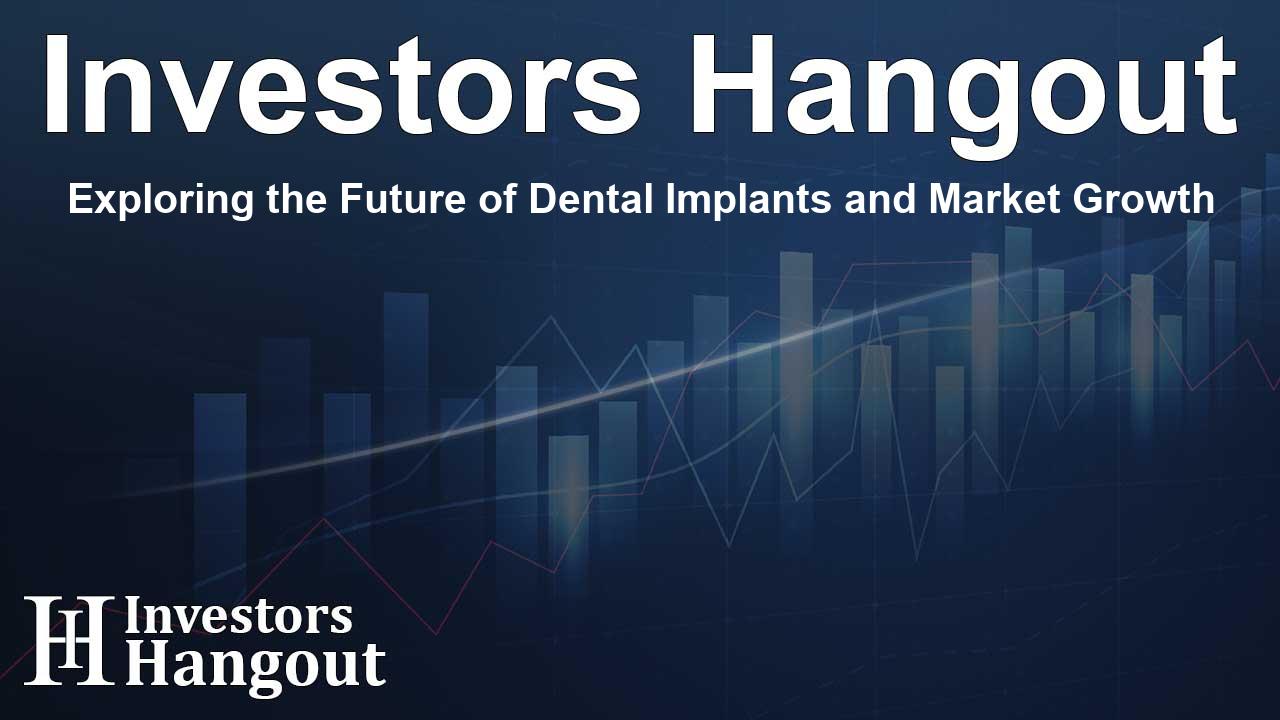Exploring the Future of Dental Implants and Market Growth

The Evolving Landscape of Dental Implants
The global dental implants market is on a significant upward trajectory, projected to increase from USD 5.45 billion by 2024 to an impressive USD 15.41 billion by 2035. This remarkable growth is expected at a compound annual growth rate (CAGR) of 9.95%, highlighting the increasing demand for advanced dental solutions.
Innovation Driving Market Expansion
As we move deeper into this transformative decade, the industry is undergoing substantial changes powered by innovations in digital dentistry and advanced materials. Cutting-edge technologies like artificial intelligence (AI) and computer-aided design and manufacturing (CAD/CAM) are revolutionizing the way dental professionals approach implants, drastically enhancing efficiency and patient satisfaction.
Advancements in Clinical Practices
Surgeons and dental networks are integrating AI-driven workflows and 3D printing techniques to improve surgical precision. These methods facilitate faster recovery times, making dental procedures more efficient than ever. With the advent of regenerative biomaterials, clinicians can now expect better outcomes, providing patients with both functional and aesthetic benefits.
Shifting Market Dynamics for Investors
The convergence of innovation within medtech and reliable digital tools presents an enticing opportunity for investors. The expansion of dental service organizations (DSOs) and the emergence of cloud-based implant planning are creating new revenue streams within the market. Investment in premium implant systems, especially as dental tourism continues to thrive in regions such as Asia-Pacific, promises substantial returns over the coming years.
Understanding Market Dynamics
Key Drivers of Demand
As the global population ages, the prevalence of dental issues such as tooth loss and chronic oral conditions continues to rise. This demographic change catalyzes the demand for dental implants, especially as patients seek solutions that not only restore their smiles but also enhance their quality of life. Moreover, advancements in biomaterials, such as titanium-zirconium alloys and bioactive coatings, are paving the way for improved implant longevity and integration within the jawbone.
Consumer Trends and Behavior
Modern consumers are increasingly leaning towards minimally invasive procedures that offer customization and natural appearances. This shift in consumer behavior not only strengthens the aesthetic appeal of dental implants but also changes how dental professionals approach treatment planning.
Technological Transformation in Dentistry
Emerging technologies are creating a robust foundation for the future of implantology. With AI algorithms assisting in treatment planning and 3D printing allowing for on-demand, patient-specific solutions, the industry is witnessing a shift towards more personalized care.
Your Guide to Strategic Opportunities
Business leaders are encouraged to invest in digital platforms that integrate imaging and CAD/CAM technologies. Collaborating with innovations in biomaterials can lead to the development of next-generation implants with enhanced characteristics. Additionally, partnerships with dental service organizations can offer a streamlined approach to standardizing products and services across the industry.
Looking Ahead: Market Challenges
While there is much promise, challenges remain. High treatment costs and limited insurance coverage in developing regions hinder the adoption of dental implants. Furthermore, there is an ongoing need for training in advanced implantology and the implementation of digital workflows to ensure successful application.
Regulatory Framework and Compliance
The landscape of dental implants is also shaped by stringent regulations that govern the approval and use of medical devices. Ensuring compliance with international standards, such as those mandated by the U.S. FDA and EU authorities, is essential for manufacturers and providers in the dental industry.
Frequently Asked Questions
What is the expected growth rate of the dental implants market?
The dental implants market is projected to grow at a CAGR of 9.95%, reaching USD 15.41 billion by 2035.
What are the primary drivers of demand in this market?
Key drivers include the aging population, advances in technology, and a growing preference for aesthetic dentistry.
How are technologies like AI impacting dental implants?
AI enhances surgical precision and treatment planning, leading to improved patient outcomes and operational efficiency.
What challenges does the market face?
The market encounters challenges like high costs, limited insurance coverage, and the need for better training in advanced implantology.
What role do dental service organizations play in the market?
Dental service organizations are instrumental in expanding access to dental implants and driving standardization across the industry.
About The Author
Contact Lucas Young privately here. Or send an email with ATTN: Lucas Young as the subject to contact@investorshangout.com.
About Investors Hangout
Investors Hangout is a leading online stock forum for financial discussion and learning, offering a wide range of free tools and resources. It draws in traders of all levels, who exchange market knowledge, investigate trading tactics, and keep an eye on industry developments in real time. Featuring financial articles, stock message boards, quotes, charts, company profiles, and live news updates. Through cooperative learning and a wealth of informational resources, it helps users from novices creating their first portfolios to experts honing their techniques. Join Investors Hangout today: https://investorshangout.com/
The content of this article is based on factual, publicly available information and does not represent legal, financial, or investment advice. Investors Hangout does not offer financial advice, and the author is not a licensed financial advisor. Consult a qualified advisor before making any financial or investment decisions based on this article. This article should not be considered advice to purchase, sell, or hold any securities or other investments. If any of the material provided here is inaccurate, please contact us for corrections.
